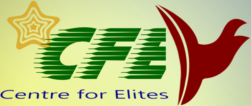COURSE AIM
The aim of foundation of mathematics for primary education is to enable students develop an in-depth and understanding of logical mathematics, algebra, trigonometry, geometry and elementary calculus up to an elementary level.
COURSE OBJECTIVES
At the end of the course, students should be able to:
- Demonstrate the nature, scope and importance of Mathematics at Primary level.
- Analyse the textbook and content of Mathematics at Primary level.
- Explain basic concepts in Arithmetic, algebra, and Geometry.
- Familiarize facts, terms, concepts, laws and principles in Mathematics.
- Apply basic concepts of Mathematics in daily life.
Foundation of Mathematics Course Content
SET THEORY
Notation and Presentation of a set.
Set operations: Union, Intersection, and Complement of a set.
Cartesian products
De Morgan’s Law
Binary operations
Application of sets
Arithmetic (Numbers)
Natural, whole, integers, rational, irrational, real numbers
Operations on numbers: addition, subtraction, multiplication and division
Use of brackets
Indices, squares, square roots, cube, cube roots.
Unitary method, variation- direct and inverse
Ratio and proportion
Algebra
Basics of Algebra
Use of letters in place of numbers.
Algebraic expressions, addition, subtraction, multiplication and division of algebraic expressions.
Polynomials: factors and multiples.
Identities.
Equations: equations with one variable, linear equations in two variables, quadratic equations.
Geometry (Basics of Geometry)
Basic concepts
Angles, pairs of angles, triangles and quadrilaterals – types &properties.
Triangles- congruence and similarity.
Circle – basic concepts, circumference, area, theorems.
Quadrilaterals – properties of different quadrilaterals, theorems.
Geometric construction
Social and Commercial Arithmetic
Profit and loss.
Percentages
Simple and compound interest
Discount and commission
Statistics –
Methods of Data collection.
Data presentations.
Measures of central tendency.
Measures of dispersion.
Application of Measures of dispersion to solve day-life problems.
Mensuration –
Area of different geometrical figures.
Volumes of different geometrical solids
Co- ordinate geometry.
The Cartesian Graph
Equation of straight line.
Parallel, Collinear and Perpendicular line.
Length and midpoint of a straight Line.
Angle between two straight lines.
SEQUENCES AND SERIES
Sequences and series.
Arithmetic progression.(A.P.)
Geometric progression (G.P.)
Mathematical induction.
Binomial theorem.
COMPUTERS
Introduction to computers.
Flow charts
Decision boxes.
Simple programs.
Mode of Delivery
- Lecture
- Deductive
- Analytic and synthetic
- Discussion
- Seminars
- Presentation
- Projects
Methods of teaching
3 hours of lectures per week
1 hour of tutorial/seminar per week
Assessment
- Coursework 50%
- 2 assignments 20%
- 2 test 30%
- Promotion Examination 50%
Total 100%
Prescribed readings
Kanondo, A. (1990). Mathematics 8-12, Pupil’s Book. Lusaka: ZEPH.
Tambulukani, G. (2004). Mathematics RainbowKit (Mark). Lusaka: Primary Reading Program, MoE.
Trivieri, A. L. (1992). Basic Mathematics. New York: Harper Collins.
Recommended readings
Channon, B.J. (1998).New General Mathematics (1-4). London: Longman.
Cockroft, W.H. (1982).Mathematics Counts. London: Longman. Parr, H.E and Shelley, J.R. (1981). Modern Mathematics. London: Bell and Hyman.
